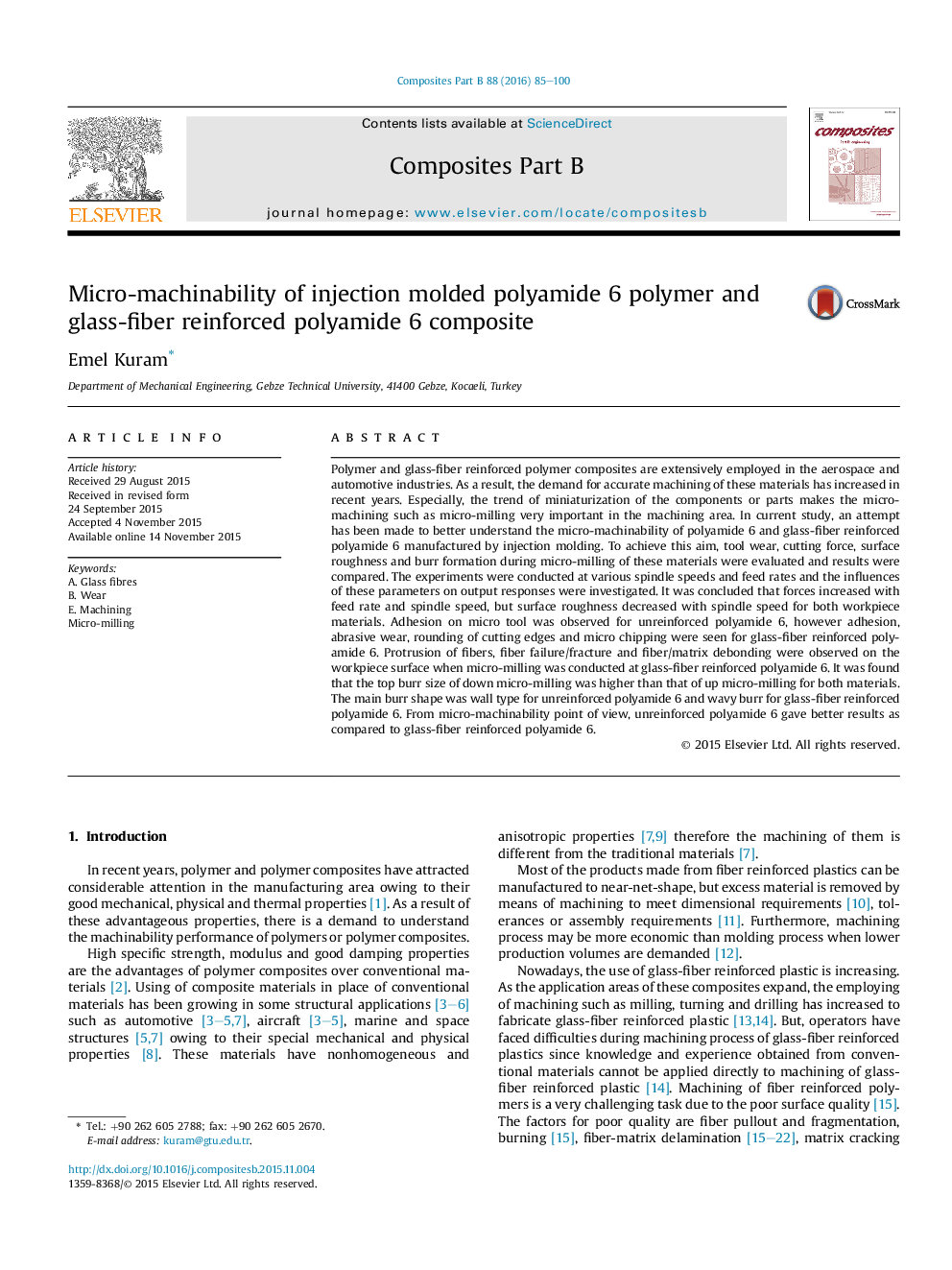| Article ID | Journal | Published Year | Pages | File Type |
|---|---|---|---|---|
| 7212972 | Composites Part B: Engineering | 2016 | 16 Pages |
Abstract
Polymer and glass-fiber reinforced polymer composites are extensively employed in the aerospace and automotive industries. As a result, the demand for accurate machining of these materials has increased in recent years. Especially, the trend of miniaturization of the components or parts makes the micro-machining such as micro-milling very important in the machining area. In current study, an attempt has been made to better understand the micro-machinability of polyamide 6 and glass-fiber reinforced polyamide 6 manufactured by injection molding. To achieve this aim, tool wear, cutting force, surface roughness and burr formation during micro-milling of these materials were evaluated and results were compared. The experiments were conducted at various spindle speeds and feed rates and the influences of these parameters on output responses were investigated. It was concluded that forces increased with feed rate and spindle speed, but surface roughness decreased with spindle speed for both workpiece materials. Adhesion on micro tool was observed for unreinforced polyamide 6, however adhesion, abrasive wear, rounding of cutting edges and micro chipping were seen for glass-fiber reinforced polyamide 6. Protrusion of fibers, fiber failure/fracture and fiber/matrix debonding were observed on the workpiece surface when micro-milling was conducted at glass-fiber reinforced polyamide 6. It was found that the top burr size of down micro-milling was higher than that of up micro-milling for both materials. The main burr shape was wall type for unreinforced polyamide 6 and wavy burr for glass-fiber reinforced polyamide 6. From micro-machinability point of view, unreinforced polyamide 6 gave better results as compared to glass-fiber reinforced polyamide 6.
Related Topics
Physical Sciences and Engineering
Engineering
Engineering (General)
Authors
Emel Kuram,
